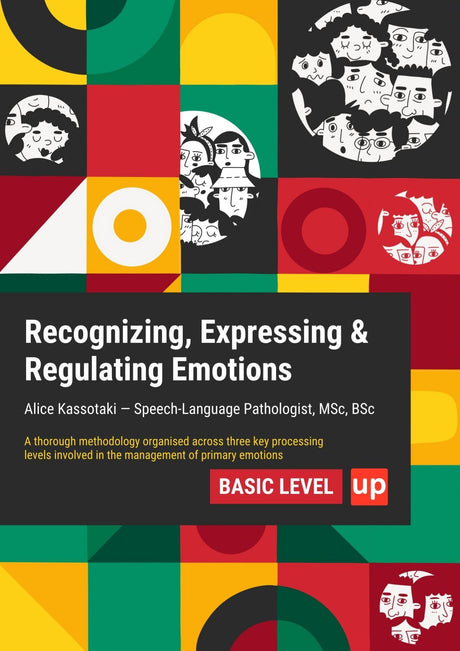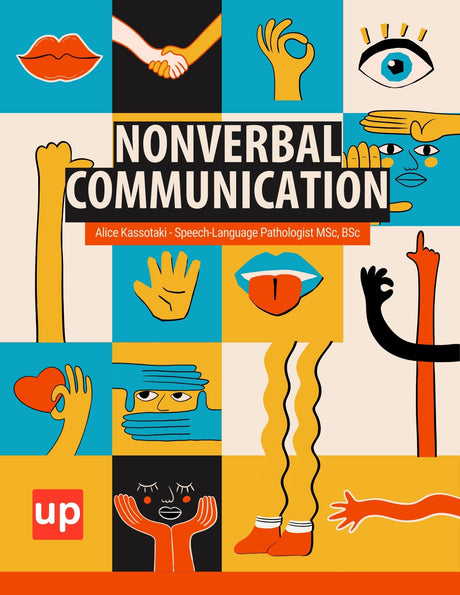In a world that prizes speed and efficiency, moving at a different pace can feel like a constant struggle. For many individuals, this isn't a choice but a core aspect of their cognitive wiring known as slow processing speed. This trait affects how quickly a person can perceive information, think about it, and respond. This guide will demystify what slow processing speed is, explore its impact across the lifespan, and provide actionable strategies to navigate challenges and leverage unique strengths.
Key Points
- Slow processing speed reflects the brain’s natural pace for perceiving, interpreting, and responding to information—a measure of efficiency, not intelligence.
- It impacts academic, social, and professional performance, often co-occurring with ADHD, learning differences, or autism, but can also arise from injury or aging.
- With awareness, evaluation, and tailored strategies—like extra time, reduced cognitive load, and technology supports—individuals can thrive at their own pace in a fast-moving world.
Introduction: Navigating a Fast-Paced World at Your Own Speed

We live in an age of instant notifications and rapid-fire conversations. But what happens when your brain's internal clock doesn't sync with the world's demanding pace? This is the reality for individuals with slow processing speed. It's not about a lack of intelligence or motivation; it's about the time it takes to manage the flow of information. Understanding this critical aspect of cognition is the first step toward creating supportive environments where everyone can thrive, regardless of their internal tempo. This comprehensive guide will explore the neurological underpinnings, the real-world impact, and the most effective strategies to support this common cognitive difference.
What is Slow Processing Speed? Deconstructing a Key Cognitive Function
To effectively support slow processing speed, we must first understand its mechanics. It's a fundamental aspect of how our brains work, influencing learning, performance, and daily tasks. It’s not a behavior or a choice, but a core component of cognition that can be measured and understood.
Defining Processing Speed: The Pace of Cognition
Processing speed is a core cognitive ability that refers to the time it takes a person to perform a mental task. It's the speed at which you can take in information through your senses (sight, sound), make sense of it, and begin to respond. Think of it as the brain's internal bandwidth—it determines how quickly and efficiently you can manage the data life throws at you. This function is essential for everything from reading a book and solving a math problem to participating in a conversation and driving a car.
What Slow Processing Speed Really Means: Not About Intelligence, But Efficiency
Crucially, slow processing speed has no correlation with intelligence. An individual can be highly intelligent, with profound insights and a vast vocabulary, and still have a processing speed deficit. The challenge lies not in the ability to understand complex ideas but in the time it takes to process them. This distinction is vital; misinterpreting this deliberate pace as a lack of understanding can undermine an individual's confidence and potential. As noted by experts like Dr. Ellen Braaten of Mass General, slow processors often engage in deep, thorough thinking, but simply require more time to arrive at their conclusions.
The Core Components: Reaction Time, Response Speed, and Output
Slow processing speed affects several key stages of completing a task. The process can be broken down into three components:
- Reaction Time: This is the time it takes to perceive and recognize information after it's presented. For example, how long it takes to recognize a word on a page or a question being asked.
- Response Speed: This is the time needed to formulate a cognitive or motor response. After recognizing the question, how long does it take to think of the answer?
- Output: This is the time required to articulate the response or perform the action.
Psychological assessments also measure reaction time variability, or the consistency of one's responses. High variability can indicate that an individual is struggling with the cognitive demands, or processing load, of a task.
The Role of Working Memory and Executive Functions
Processing speed does not operate in a vacuum. It is intrinsically linked to other executive functions, the set of mental skills that act as the brain's management system. The most critical connection is with working memory, the mental "scratchpad" we use to hold and manipulate information for short-term tasks.
When processing speed is slow, information may fade from working memory before it can be fully processed or used. This makes multi-step directions, mental math, and organizing complex thoughts particularly challenging. Furthermore, a high processing load—the amount of information that needs to be juggled at once—can overwhelm the system, leading to errors and mental fatigue. This can also impact error correction, as the individual may not have the cognitive resources left to notice and fix a mistake. Research from experts like Nigg et al. highlights how these interconnected deficits in executive functions are often central to conditions like ADHD.
The Many Faces of Slow Processing Speed: How It Shows Up in Life

Slow processing speed is not a single, isolated issue. Its effects ripple across academic, social, and personal domains, creating distinct challenges in each area.
In Academic Settings: Challenges in Learning and Performance
For children, school is often where the impact of slow processing speed becomes most apparent. A student might struggle to finish tests in the allotted time, take hours to complete homework, or have difficulty keeping up with note-taking during a lecture. Teachers might observe a delay in answering questions, which can be mistaken for inattention or a lack of knowledge. This can significantly impact performance in subjects that require rapid fact retrieval, such as math, or fluency, as seen in a reading disorder.
In Daily Life and Social Interactions: Navigating the Everyday
Beyond the classroom, slow processing speed affects the rhythm of everyday life. Following multi-step directions ("Go get your shoes, grab your backpack, and don't forget your lunch") can be difficult. Simple routines, like a shared family meal, can become stressful if conversations are too fast-paced, leaving the individual unable to formulate their thoughts in time to contribute. Tasks that seem simple, from getting ready in the morning to completing a chore like a designated class job, can take longer, leading to frustration for both the individual and those around them. Even for young adults returning home from college, adjusting to family dynamics and daily demands can highlight these processing differences.
Emotional and Psychological Impact: Beyond the Functional Challenges
Constantly feeling a step behind can take an emotional toll. Individuals with slow processing speed may experience significant anxiety, especially in timed or high-pressure situations. This chronic stress of trying to keep up can lead to feelings of being overwhelmed, low self-esteem, and a reluctance to engage in new or challenging activities. These emotional difficulties are not just a byproduct; they can create a feedback loop, as anxiety itself can further increase the processing load and slow down cognitive function.
Understanding the "Why": Potential Causes and Contributing Factors
Slow processing speed isn't a character flaw; it's rooted in neurobiology. Understanding its origins—the inherent brain differences that cause it—can foster greater empathy and more effective support strategies.
Neurodevelopmental Differences: A Spectrum of Origins
For many, slow processing speed is a neurodevelopmental trait. Research has shown that the brain's white matter—the network of nerve fibers that transmits signals between different brain regions—plays a crucial role. The quality and organization of this white matter microstructure directly impact the speed and efficiency of neural communication. Differences in the integrity of this wiring can lead to slower processing.
This trait is a common feature in several conditions:
- Attention-Deficit/Hyperactivity Disorder (ADHD): Particularly the inattentive subtype, where it can manifest as a sluggish cognitive tempo.
- Learning Disorders: It is a core feature of a reading disorder (dyslexia), a math disorder (dyscalculia), and a disorder of written expression (dysgraphia), affecting fluency and automaticity. Research by Willcutt et al. has consistently shown the strong link between processing speed and learning disabilities.
- Autism Spectrum Disorder (ASD): Many individuals on the spectrum exhibit unique processing patterns, which can include slower speeds for certain types of information.
Acquired Factors: When Processing Speed Changes
While often developmental, a change in processing speed can also be acquired. Traumatic brain injuries, concussions, and certain medical conditions can damage neural pathways. Furthermore, processing speed is a key indicator of brain health as we age. A notable decline can be an early sign of mild cognitive impairment (MCI) or neurodegenerative conditions like Alzheimer's disease. Institutions like the Bristol Memory Disorders Clinic routinely assess processing speed as part of their evaluations for cognitive decline, as it reflects overall cerebral integrity. Scores from tests like the Mini-Mental State Examination (MMSE score) or National Adult Reading Test (NART score) are often considered alongside direct measures of processing speed.
Debunking the Myths: What Slow Processing Speed Is NOT
Misconceptions about slow processing speed are common and damaging. Clearing them up is essential for providing meaningful support and fostering a healthy self-concept.
Not a Sign of Low Intelligence
This is the most critical myth to dispel. A person's processing speed is a measure of cognitive efficiency, not their intellectual capacity. A formal evaluation often reveals distinct patterns of strengths and weaknesses, where an individual may have superior verbal comprehension or reasoning skills alongside a significantly lower processing speed score. Many brilliant, creative, and insightful individuals have slow processing speed.
Not Laziness or Lack of Effort
Individuals with slow processing speed are often working much harder than their peers to keep up. Their deliberate pace is a result of their brain taking the necessary time to process information accurately, not a lack of motivation or effort. Accusing them of being lazy is both factually incorrect and deeply invalidating.
Not Something You Can "Just Try Harder" To Fix
Telling someone to "hurry up" is not only ineffective but can also increase anxiety, which further hinders cognitive performance. It is a neurobiological characteristic that requires strategies and accommodations, not sheer willpower, to manage. Pushing harder often leads to more errors and frustration, not faster performance.
Is It Slow Processing Speed? Recognizing the Signs
Identifying the signs is the first step toward getting the right support. These behaviors can manifest differently in children and adults but often share common themes.
Observable Behaviors in Children and Adults
Common signs include:
- Consistently being the last to finish tasks or tests.
- Difficulty making decisions, especially under pressure.
- Struggling to follow fast-paced conversations or missing jokes.
- Feeling overwhelmed by too much information at once.
- Needing to read instructions or have them repeated multiple times.
- Taking an unusually long time to complete daily routines (getting dressed, chores).
- Difficulty with rapid recall of information, like math facts.
The Importance of Professional Evaluation
If you suspect slow processing speed, a formal evaluation is crucial. This is typically done as part of a comprehensive learning and emotional assessment program conducted by a neuropsychologist. These professionals use a battery of standardized neuropsychological tests to measure a wide range of cognitive abilities.
The gold standard for assessing intelligence and processing speed is the Wechsler Adult Intelligence Scale (WAIS) or the equivalent for children (WISC). The Processing Speed Index subtest often involves a visual search task, like finding specific symbols in a row of random symbols. This type of visual search test directly measures how quickly and accurately an individual can scan and process visual information. Other assessments, like the Hopkins Verbal Learning Test-Revised, may be used to evaluate how processing speed impacts other domains like verbal memory. This comprehensive approach provides a definitive diagnosis, identifies any co-occurring disorders like attention issues, and offers tailored recommendations for support.
Effective Strategies to Support Slow Processing Speed: Your Actionable Toolkit

Once identified, slow processing speed can be managed effectively with the right strategies and a supportive environment that values thoroughness over haste.
Strategies for Individuals with Slow Processing Speed: Self-Advocacy and Adaptation
- Break Down Tasks: Divide large projects into smaller, manageable steps to prevent feeling overwhelmed and reduce the processing load.
- Use Tools: Leverage timers for focus, digital calendars for organization, and note-taking apps to offload working memory. Assistive technology, such as speech-to-text software, can be a game-changer.
- Advocate for Needs: Learn to confidently ask for instructions to be repeated, request extra time on assignments, or ask for meeting agendas in advance to allow for pre-processing.
- Prioritize and Plan: Take a few moments before starting a task to think through the steps. This pre-planning reduces the cognitive load during the task itself.
Strategies for Parents and Educators: Creating a Supportive Environment
- Provide Extra Time: This is the most critical accommodation. For students, this can be formalized through an IEP or a 504 plan.
- Give Clear, Simple Instructions: Offer one or two steps at a time, both verbally and in writing. Wait for the first step to be completed before giving the next.
- Reduce Clutter: Minimize visual and auditory distractions in learning and work spaces to support attention and reduce extraneous cognitive load.
- Focus on Quality over Quantity: A teacher might reduce the number of problems on a homework assignment, focusing on concept mastery rather than speed.
- Embrace Routine: Predictable schedules for homework, chores, and bedtime reduce the mental energy needed for daily transitions.
Strategies for Workplaces and Supporting Adults: Promoting Inclusivity and Efficiency
- Offer Flexible Deadlines: When possible, allow for more time on complex tasks that require deep thought and analysis.
- Provide Information in Advance: Share meeting agendas, reports, and reading materials beforehand to allow for pre-processing. This respects different thinking styles.
- Encourage Written Communication: Using email, Slack, or other messaging platforms allows for more time to formulate thoughtful, well-constructed responses compared to on-the-spot conversations.
- Focus on Strengths: Recognize that while an employee may take longer on some tasks, they may excel in others that require meticulousness, creativity, or deep analysis.
What Doesn't Help (And Can Even Hurt): Common Pitfalls to Avoid
Knowing what to avoid is as important as knowing what to do. Certain common reactions can exacerbate the challenges of slow processing speed and damage an individual's confidence.
Rushing or Pressuring Individuals to Speed Up
This is the most counterproductive response. Pressure increases anxiety, which acts like a brake on cognitive function, making processing even slower and more prone to errors. It creates a stressful environment where the individual's mind is focused on the pressure, not the task.
Attributing Slow Processing Speed to Laziness or Lack of Intelligence
This assumption is factually incorrect and emotionally damaging. It erodes self-esteem and discourages individuals from seeking help or advocating for their needs. It invalidates the immense effort they are often expending just to keep pace.
Overloading with Too Much Information or Too Many Tasks
Giving too many verbal instructions at once or assigning a long list of tasks without prioritization will overwhelm an individual's working memory and processing capacity. This heavy processing load often leads to cognitive shutdown rather than productivity, as the person doesn't know where to start.
Ignoring the Emotional Impact and Potential for Anxiety
Failing to acknowledge the stress, frustration, and emotional difficulties associated with slow processing speed leaves a critical part of the experience unaddressed. Support must be both practical and emotional. Acknowledging the effort and validating the frustration can make a tremendous difference.
Conclusion
Understanding slow processing speed is about shifting perspective—from seeing it as a deficit to recognizing it as a different cognitive style. It is not a barrier to success but a trait that requires patience, strategic adaptation, and a supportive environment. By debunking myths, identifying challenges through professional evaluation, and implementing effective strategies at home, school, and work, we can empower individuals to navigate a fast-paced world at their own pace. The goal is not to force everyone to move faster, but to create a world where thoughtful, deliberate processing is valued and accommodated, allowing everyone to contribute their unique talents and achieve their full potential.
Frequently Asked Questions (FAQ)
What is slow processing speed?
Slow processing speed means it takes longer for a person’s brain to take in, interpret, and respond to information. It affects the speed of thinking, not the depth or quality. Many people with slow processing speed are highly intelligent but need more time to complete cognitive tasks.
How does it differ from low intelligence or laziness?
Processing speed is independent of IQ or effort. Someone may understand complex concepts but struggle to respond quickly. The issue lies in efficiency of information processing, not motivation or ability.
What causes slow processing speed?
It can be neurodevelopmental (present from childhood) or acquired later due to head injury, neurological illness, or aging. Differences in brain white matter—responsible for communication between regions—are often involved.
Is slow processing speed related to ADHD or learning disabilities?
Yes. It is common in ADHD (especially the inattentive subtype), dyslexia, dyscalculia, and autism spectrum disorder. Slow processing affects fluency and task completion but does not necessarily indicate attention or comprehension deficits.
How can it affect school performance?
Students may take longer to read, write, or complete tests. They often need more time to understand instructions or organize responses. Without accommodations, this can lead to anxiety, frustration, and underperformance despite strong understanding.
What are common signs in adults?
Adults may struggle with decision-making under pressure, keeping up in fast-paced meetings, or managing multiple instructions at once. They may need extra time to plan, process, or articulate thoughts in conversation or writing.
How is slow processing speed diagnosed?
A neuropsychologist administers standardized assessments such as the Wechsler Adult Intelligence Scale (WAIS) or WISC for children. Subtests like the Processing Speed Index evaluate how quickly and accurately one performs cognitive tasks.
What strategies help individuals manage slow processing speed?
- Break tasks down into smaller, structured steps.
- Use assistive tools like timers, planners, or speech-to-text.
- Request extra time on tests or work tasks.
- Simplify instructions and reduce distractions.
- Plan ahead to minimize time pressure.
What supports can educators or workplaces provide?
Teachers and employers can offer flexible deadlines, reduced workloads, or written instructions. In schools, accommodations may be formalized in an IEP or 504 Plan. Emphasizing comprehension and accuracy over speed fosters equity.
Can processing speed improve?
While one’s baseline pace is largely stable, performance can improve with practice, reduced anxiety, and environmental support. Managing fatigue, stress, and distractions also helps optimize efficiency and accuracy.
Original content from the Upbility writing team. Reproducing this article, in whole or in part, without credit to the publisher is prohibited.
References
- Braaten, E. (2018). Bright Kids Who Can’t Keep Up: Help Your Child Overcome Slow Processing Speed and Succeed in a Fast-Paced World. Guilford Press.
- Willcutt, E. G., et al. (2010). Cognitive and neuropsychological correlates of processing speed deficits in ADHD and learning disorders. Journal of Abnormal Child Psychology, 38(7), 1047–1061.
- Nigg, J. T. (2017). Getting Ahead of ADHD. Guilford Press.
- Kail, R. (2000). Speed of information processing: Developmental change and links to intelligence. Journal of School Psychology, 38(1), 51–61.
- American Psychological Association. (2020). Understanding Processing Speed and Cognitive Efficiency.









